Top Tips
Markets of Cho Lon/Sai Gon
In the old quarter Cho Lon (China town) you will find many markets. Some markets are big with many different products. Other markets are specialised in one product like, rice, fish, sugar, duck, herbs and medicines.
Old city centre of Ha Noi
With her lively centre and her colonial styled districts Ha Noi is one of the nicest cities of South East Asia. Take a long walk or Xich Lo tour to visit all the beautiful temples and cosy café’s.
Hoi An
In ancient Vietnam Hoi An was one of the most important harbours. Today Hoi An with her traditional Chinese houses is one lively open air museum. Be there with full moon.
Da Lat Palace
This restored colonial styled hotel is magnificent. Neither in Vietnam nor in neighbouring countries you will find another hotel with such grandeur.
Ha Long Bay
With more than 3000 rocks and islands rising up high from the ocean this bay of the “descending dragon” is simply breathtaking.
My Son
Despite the bombardments during the Vietnam War My Son is still very impressive. My Son is the former religious and cultural centre of the Cham dynasty. You will be rewarded for your detour to the green
valley and its ancient city.
Love market Sa Pa
On Saturday you can visit the famous love market. The minorities look for a partner at this colourful traditional market.
Beach Mui Ne
Palm trees, dunes and white sand. It is one of the most idyllic beaches of Vietnam.
Grave of King Tu Duc
King Tu Duc was a romantic poet. He loved beauty and harmony so much that by designing his own grave he made sure this would last even after his death Walking trough these beautiful gardenlike ruins you will
experience his lifestyle.
Phung Hiep
At this crossing of waterways you will find one of the traditional Vietnamese
floating markets. Loud and clear you will experience this local live of the Mekong Delta
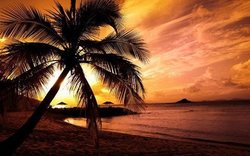
Five top places for having nude bath in Vietnam
VietNamNet Bridge – Having a nude bath in nature has been imported into Vietnam and it has been gradually accepted by Vietnamese people. Let’s review famous places for nude bath in Vietnam with us.
1. Phu Quoc Island
Phu Quoc is the largest island in Vietnam. The island is part of the southern province of Kien Giang, has a total area of 574 square kilometers and a permanent population of approximately 85,000.
The district of Phu Quoc includes the island proper and 21 smaller islets. The district seat, Duong Đong, is located on the west coast, and is also the largest town on the island. Phu Quoc is one of the most popular tourist destinations of Vietnam.
Phu Quoc lies just 45km west of Ha Tien town and 120km from Rach Gia city. Open year round with a peak season from November to March, Phu Quoc is becoming well known for stunning beaches, untouched natural environment, the easy going and relaxed atmosphere, friendly locals, and fantastic scuba diving and snorkeling.
The majority of Phu Quoc Island is dedicated to National Park and protected marine environment, providing a memorable experience, with plenty of exciting activities and places to visit to keep you and the family entertained during your stay.
Tourists can have a nude bath under romantic waterfalls or at beaches on small and uninhabited islets. The most famous beach is on An Thoi peninsula.
VietNamNet Bridge – Having a nude bath in nature has been imported into Vietnam and it has been gradually accepted by Vietnamese people. Let’s review famous places for nude bath in Vietnam with us.
1. Phu Quoc Island
Phu Quoc is the largest island in Vietnam. The island is part of the southern province of Kien Giang, has a total area of 574 square kilometers and a permanent population of approximately 85,000.
The district of Phu Quoc includes the island proper and 21 smaller islets. The district seat, Duong Đong, is located on the west coast, and is also the largest town on the island. Phu Quoc is one of the most popular tourist destinations of Vietnam.
Phu Quoc lies just 45km west of Ha Tien town and 120km from Rach Gia city. Open year round with a peak season from November to March, Phu Quoc is becoming well known for stunning beaches, untouched natural environment, the easy going and relaxed atmosphere, friendly locals, and fantastic scuba diving and snorkeling.
The majority of Phu Quoc Island is dedicated to National Park and protected marine environment, providing a memorable experience, with plenty of exciting activities and places to visit to keep you and the family entertained during your stay.
Tourists can have a nude bath under romantic waterfalls or at beaches on small and uninhabited islets. The most famous beach is on An Thoi peninsula.
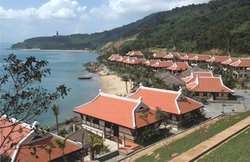
2. Son Tra peninsula
Son Tra is a beautiful peninsula in the central city of Da nang, with long, white sandy beaches, picturesque landscapes and primeval forests.
Stretching a total area of 4,000 hectares, Son Tra is home to around 1,000 different plant species, 51 birds, 15 reptiles, and 42 species of coral. Red cheek gibbons and a species of turtle are among the animals living in the area that are also listed in Vietnam’s Red Book of endangered species.
The peninsula has been named a national park to help protect the delicate balance of life in the area.
Surrounded by the sea and wooded areas, the peninsula has an extensive array of beaches like Bai Bac, Bai Nam and Bai But – heaven for those seeking water activities like swimming, fishing and sightseeing by boat. One can also take a dive to explore extraordinary coral reefs. With its strong winds and large waves, Bai Bac Beach is perfect for surfers. Bai But and Bai Nam are more gentle and safe for scuba diving.
Those heading below the surface will be treated to 42 different species of brilliant coral reef as well as scores of marine life like fairy fish, macropodus, and butterfly fish. The spectacular scenery here feels like entering into a breath-taking underwater palace. Alternatively, by heading up the peninsula’s mountainside, tourists can explore the forest terrain and all of the many plants and animals in Son Tra National Conservation Park. Also not to be missed is the huge Mui Nghe stone, which lies to the east of the peninsula. With its rocky protuberances projecting into the open sea, it is a most impressive sight.
Above the rock, one can become hypnotized by the sparkling blue sea water, and in the distance, a dazzling array of colorful marine creatures and coral reefs can be seen.
Son Tra is connected with Da Nang via the longest suspension cable bridge in Vietnam, the Thuan Phuoc Bridge.
There’re many myths about this peninsula. Long time ago, a legend claimed that fairies have been often observed landing on the top of Son Tra Mount to play chess. That is thought to be the reason why there’s a big flat stone like a chess board there and that place is called Ban Co Peek (Chess Board Peek).
From here you can take a look at the whole Da Nang city and the bow-shaped seashore forming Da Nang Bay. If you have a chance to climb here at dawn or sunset, the scenery is fantastic. The clouds are all pink and appear so close to you. The sun is hidden but the light reflects on the sea surface and makes the water glistening. Another story is that the young fairy nymphs were so attracted by one of the most elegant beaches that they secretly landed there to play and bathe. To remind everybody the myth, people called this beach Tien Sa (Fairies’ Landing).
Tourists can have nude baths at small beaches, which are hidden by rock-top.
Son Tra is a beautiful peninsula in the central city of Da nang, with long, white sandy beaches, picturesque landscapes and primeval forests.
Stretching a total area of 4,000 hectares, Son Tra is home to around 1,000 different plant species, 51 birds, 15 reptiles, and 42 species of coral. Red cheek gibbons and a species of turtle are among the animals living in the area that are also listed in Vietnam’s Red Book of endangered species.
The peninsula has been named a national park to help protect the delicate balance of life in the area.
Surrounded by the sea and wooded areas, the peninsula has an extensive array of beaches like Bai Bac, Bai Nam and Bai But – heaven for those seeking water activities like swimming, fishing and sightseeing by boat. One can also take a dive to explore extraordinary coral reefs. With its strong winds and large waves, Bai Bac Beach is perfect for surfers. Bai But and Bai Nam are more gentle and safe for scuba diving.
Those heading below the surface will be treated to 42 different species of brilliant coral reef as well as scores of marine life like fairy fish, macropodus, and butterfly fish. The spectacular scenery here feels like entering into a breath-taking underwater palace. Alternatively, by heading up the peninsula’s mountainside, tourists can explore the forest terrain and all of the many plants and animals in Son Tra National Conservation Park. Also not to be missed is the huge Mui Nghe stone, which lies to the east of the peninsula. With its rocky protuberances projecting into the open sea, it is a most impressive sight.
Above the rock, one can become hypnotized by the sparkling blue sea water, and in the distance, a dazzling array of colorful marine creatures and coral reefs can be seen.
Son Tra is connected with Da Nang via the longest suspension cable bridge in Vietnam, the Thuan Phuoc Bridge.
There’re many myths about this peninsula. Long time ago, a legend claimed that fairies have been often observed landing on the top of Son Tra Mount to play chess. That is thought to be the reason why there’s a big flat stone like a chess board there and that place is called Ban Co Peek (Chess Board Peek).
From here you can take a look at the whole Da Nang city and the bow-shaped seashore forming Da Nang Bay. If you have a chance to climb here at dawn or sunset, the scenery is fantastic. The clouds are all pink and appear so close to you. The sun is hidden but the light reflects on the sea surface and makes the water glistening. Another story is that the young fairy nymphs were so attracted by one of the most elegant beaches that they secretly landed there to play and bathe. To remind everybody the myth, people called this beach Tien Sa (Fairies’ Landing).
Tourists can have nude baths at small beaches, which are hidden by rock-top.
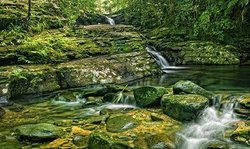
3. Bach Ma Mountain
Bach Ma (White Horse) Mount is 60 km south of Hue city. It is about 1,450m above sea level in a transition zone of the northern and southern climate, so it bears a temperate climate, similar to Sapa, Tam Dao, Da Lat, etc.
There, the green vegetation is abundant all the year round. The animals are also rich with chirps and calls all days and nights which sound both wild and familiar...
Bach Ma Mount also has many limpid brooks and picturesque waterfalls. At the 16th kilometer on Cau Hai - Bach Ma road, turning left and walk for 20 to 30 minutes, tourists will also find 400m high, 20m wide Do Quyen waterfall which suddenly appears as if it were suspended in the sky...
In the summer, rhododendron flowers are blooming on both sides of the fall like two huge flowery silk carpets. In the centre of the resort is Bac (Silver) waterfall, only 10m high and 40m wide and look like a spotless white curtain swayed by the wind.
More than half a century ago, the French recognized the beauty of Bach Ma and began to develop it. Within 5 years (1942-1946), 139 villas were continuously built under the foliage of old trees and by sheer cliffs.
From the top of Bach Ma, people can view landscapes of Hai Van Pass, Tuy Van mount, Cau Hai lagoon with heaving fishing boats and even the shimmering electrical lights of Hue city at night as well as the huge and boundless East Sea.
Waterfalls are specialties of this land. Tourists to Bach Ma are interested in having nude baths at Ngu Ho and massage bath at Tri Sao, Bac, Thuy Dien and Truot waterfalls.
Bach Ma (White Horse) Mount is 60 km south of Hue city. It is about 1,450m above sea level in a transition zone of the northern and southern climate, so it bears a temperate climate, similar to Sapa, Tam Dao, Da Lat, etc.
There, the green vegetation is abundant all the year round. The animals are also rich with chirps and calls all days and nights which sound both wild and familiar...
Bach Ma Mount also has many limpid brooks and picturesque waterfalls. At the 16th kilometer on Cau Hai - Bach Ma road, turning left and walk for 20 to 30 minutes, tourists will also find 400m high, 20m wide Do Quyen waterfall which suddenly appears as if it were suspended in the sky...
In the summer, rhododendron flowers are blooming on both sides of the fall like two huge flowery silk carpets. In the centre of the resort is Bac (Silver) waterfall, only 10m high and 40m wide and look like a spotless white curtain swayed by the wind.
More than half a century ago, the French recognized the beauty of Bach Ma and began to develop it. Within 5 years (1942-1946), 139 villas were continuously built under the foliage of old trees and by sheer cliffs.
From the top of Bach Ma, people can view landscapes of Hai Van Pass, Tuy Van mount, Cau Hai lagoon with heaving fishing boats and even the shimmering electrical lights of Hue city at night as well as the huge and boundless East Sea.
Waterfalls are specialties of this land. Tourists to Bach Ma are interested in having nude baths at Ngu Ho and massage bath at Tri Sao, Bac, Thuy Dien and Truot waterfalls.
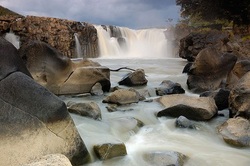
4. Gia Long Waterfall
Gia Long is a waterfall on the Serepok River in Krong Ana district of Dak Lak Province. Traveling on National Highway 14 from Ho Chi Minh City to Binh Duong - Binh Phuoc, Gia Long waterfall is over 30km from Buon Ma Thuot.
Gia Long is a very beautiful waterfall, around 30m high, 100m wide. The waterfall, with a 100sq.m lake is surrounded by the jungle, which is very romantic and suitable for having a nude bath.
Gia Long is a waterfall on the Serepok River in Krong Ana district of Dak Lak Province. Traveling on National Highway 14 from Ho Chi Minh City to Binh Duong - Binh Phuoc, Gia Long waterfall is over 30km from Buon Ma Thuot.
Gia Long is a very beautiful waterfall, around 30m high, 100m wide. The waterfall, with a 100sq.m lake is surrounded by the jungle, which is very romantic and suitable for having a nude bath.
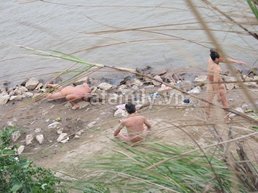
5. Red River’s middle bank
If you are in Hanoi, you don't have to go anywhere to have a nude bath; just go to the alluvial ground amid the Red River.
This alluvial bank has become a place for having nude baths for over ten years. It is different from other sites for nude baths because it is open-air (well in the open).
If you are in Hanoi, you don't have to go anywhere to have a nude bath; just go to the alluvial ground amid the Red River.
This alluvial bank has become a place for having nude baths for over ten years. It is different from other sites for nude baths because it is open-air (well in the open).
